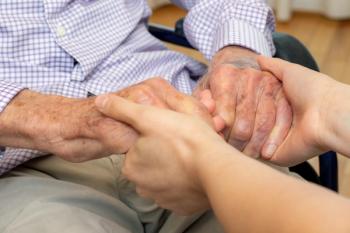
Wearable Data Can Help Change Behavior to Keep Blood Pressure Down
How researchers used a Fitbit to influence behavior change.
Lowering blood pressure requires behavior change, but wearable technology data can help.
After his father spent a week in the intensive care unit, Sujit Dey, Ph.D., experienced his own medical emergency. His blood pressure shot up, prompting him to visit his doctor, who gave him a slew of recommendations to help keep his numbers down. Dey began to implement the doctor’s suggestions regarding sleep, exercise and eating habits, but he quickly grew overwhelmed by all the changes he was required to make.
The incident led Dey to wonder if there was a better way to think about blood pressure, one that would allow for personalized lifestyle recommendations, which are more likely to make a difference and more likely to be implemented.
>>
“We want to enable a new generation of care that is proactive and continuous,” said Dey, who is a professor at the Department of Electrical and Computer Engineering at the University of California, San Diego.
In
The machine-learning process they used, called random forest, selects and weighs the features that are most likely to influence the outcome they’re seeking to predict: blood pressure. That means that, in addition to successfully predicting the next day’s blood pressure, the model could pinpoint which behaviors are most likely to positively or negatively affect the outcome and should therefore be improved or avoided.
In Dey’s study, two of the eight participants made changes to the features deemed most important by the algorithm to predicting their blood pressure. For the first subject, the three factors were related to physical activity (number of sedentary minutes, calories burned and lightly active minutes), while for the second, they were related to sleep (time to bed, minutes awake and time in bed). The first user increased his activity, and the second went to sleep earlier over a two-week period. The researchers observed that between the first and second week, after the changes had been implemented, both users saw their blood pressure drop.
The researchers plan to begin a trial with hypertensive or mildly hypertensive patients who are not yet taking medication. The hope is that because their model is based on personal behavior, it will be able to pinpoint which behaviors to target, thereby keeping patients off medication, Dey said.
They are also working on ways of collecting more data that will expand the algorithm to analyze additional behaviors. Nutrition, for example, is an important factor in blood pressure, but at the moment, the only way to collect that information is manually, which makes it highly unreliable and not useful for their model, Dey said.
The project is a result of UCSD’s Mobile Systems Design Library, which uses tech and data to pursue advances in the healthcare space.
Get the best insights in healthcare analytics
Related








































